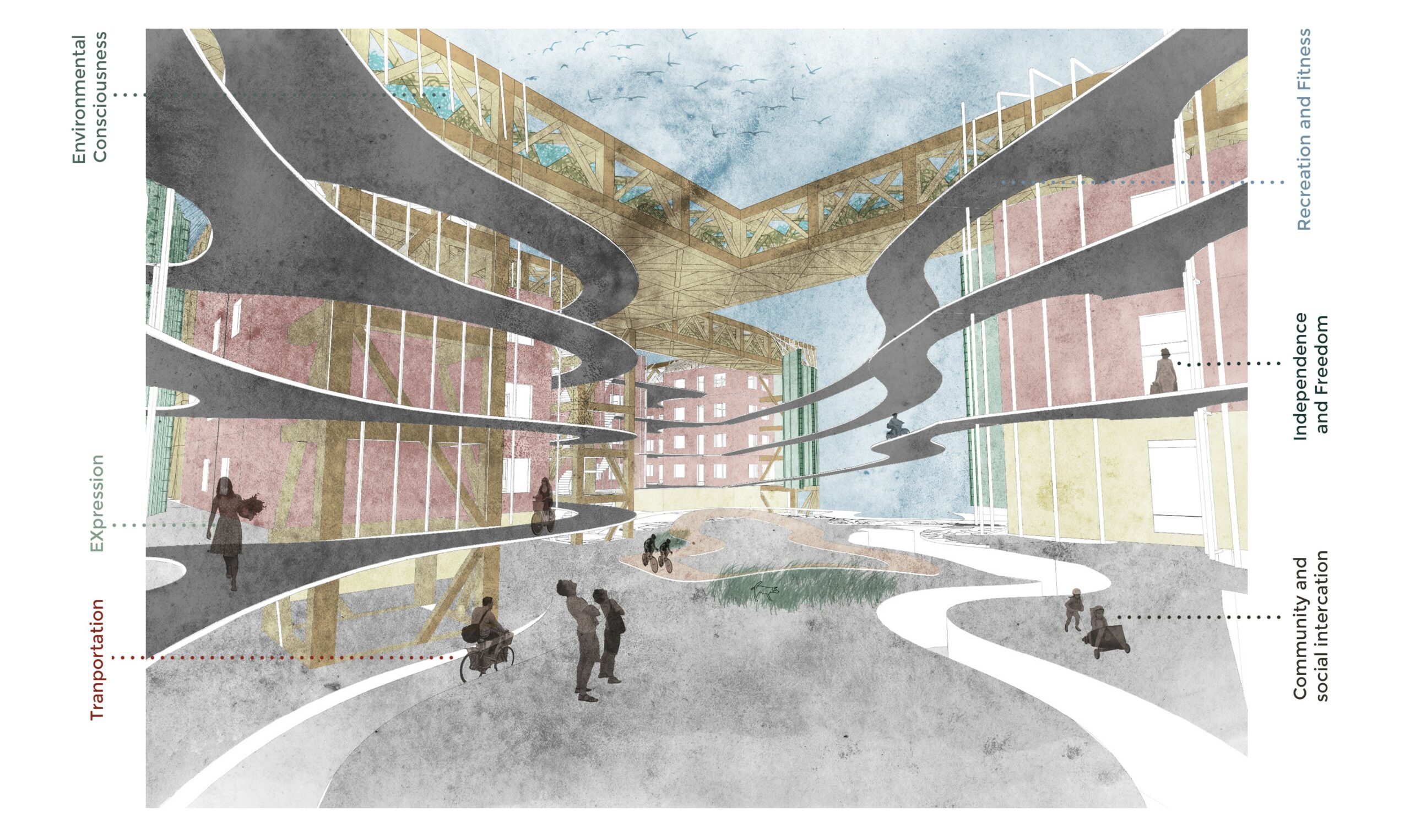Incorporating the principles of Industry 4.0, our architectural project redefines urban living by seamlessly integrating sustainable design strategies with advanced manufacturing techniques. With a focus on promoting bicycle culture and health, our industry manufactures bikes.
In this module, we synthesised the previous modules into a holistic design. The design principles from thermodynamics, exosystemic structures, metabolic building systems and envelope are consolidated into one design.
Concept and Design Principle
By questioning what a bike means to an individual, we laid out a few corresponding design strategies. The aim of the project is to create an immersive biking experience. Hence, every part of the project is curated based on requirements of the biking community.
For example, having bike, offers an alternative, environmentally conscious transportation alternative. Not only that, onwing a bike also gives people and especially youngsters, a lot of independence and freedom. Looking at all the communities created around bikes, it is clear that community and social interaction are an important part of the bike experience. Finally, bikes come in various shapes and colours and by playing with accessories, they can also be a way to express oneself.
These 6 characteristics of bikes, are then translated into design strategies. Inspired by the shape and aerodynamics of bikes, we placed a skin around our building, serving thermodynamic ánd water filtration purposes purposes. As a social and recreational space, we added a bike ramp going all the way from the ground floor through the industry, to the central velodrome and then all the way to the top. This bike ramp also gives our project its uniqueness. Both the bike ramp, including the circulation slab on each floor, and the aerodynamic facade are hung with tensors, reminding us of the spokes of bicyle wheels.

Massing Development
Given the importance of industry in this project, we started by covering 95% of the site on the ground floor with industry and a staggered first floor with offices and double height industry spaces. The velodrome, being an core element of our project, was placed in the centre of the site. The residential units were further erected around the velodrome keeping in mind the thermodynamic conditions of Barcelona by staggering them for wind flow and orienting them in the north-south direction. The biking ramp flows all the way to the top floor, connecting industry and housing and turning the circulation into an immersive experience.

Industry Design
The idea of the industry, would be to create an immersive experience for the user, by making the industry accessible for people through the bike path, we not only allow individuals to see how bikes are made; we also allow them to be part of the experience and test them out. Bikes are not only our end product, they become an integral part of the whole experience.
Accentuating this journey through the industry, the production cycle is put forward by starting the cycle lane from the street and going through the industry following the production stepps in chronological order to the final step of bike production. Lastly, ending the bike story, at the end of the production line, individuals can also test out the bikes on the velodrome or on the bike ramp.

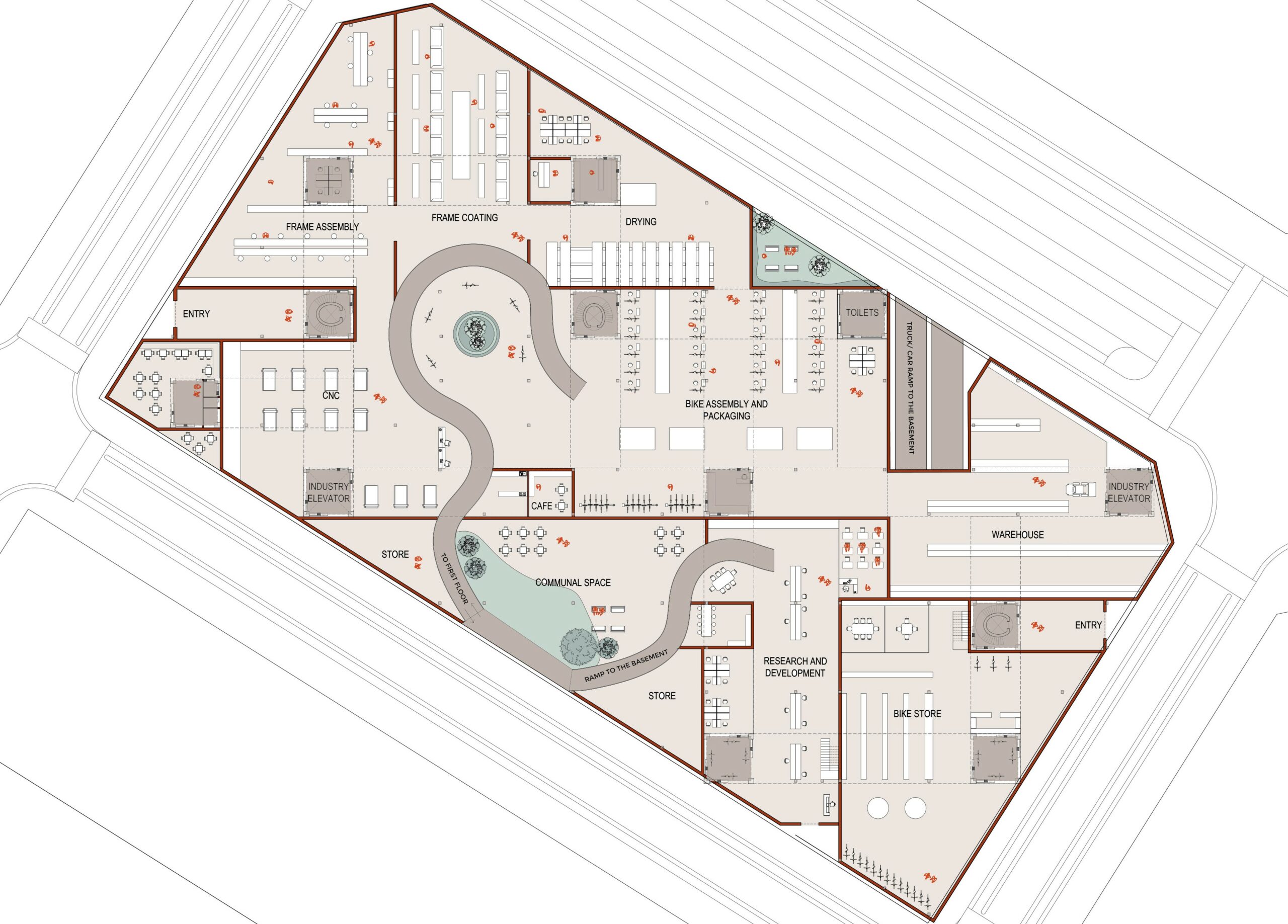
Street Plan
Given the importance of bikes, we decided to further work out the street plan, placing bike users at its center. Two types of streets can be identified; motorized streets on the wide lanes and non-motorized streets on the narrower axises. Bike lanes are separated from other lanes by a green buffer offering safety to the use
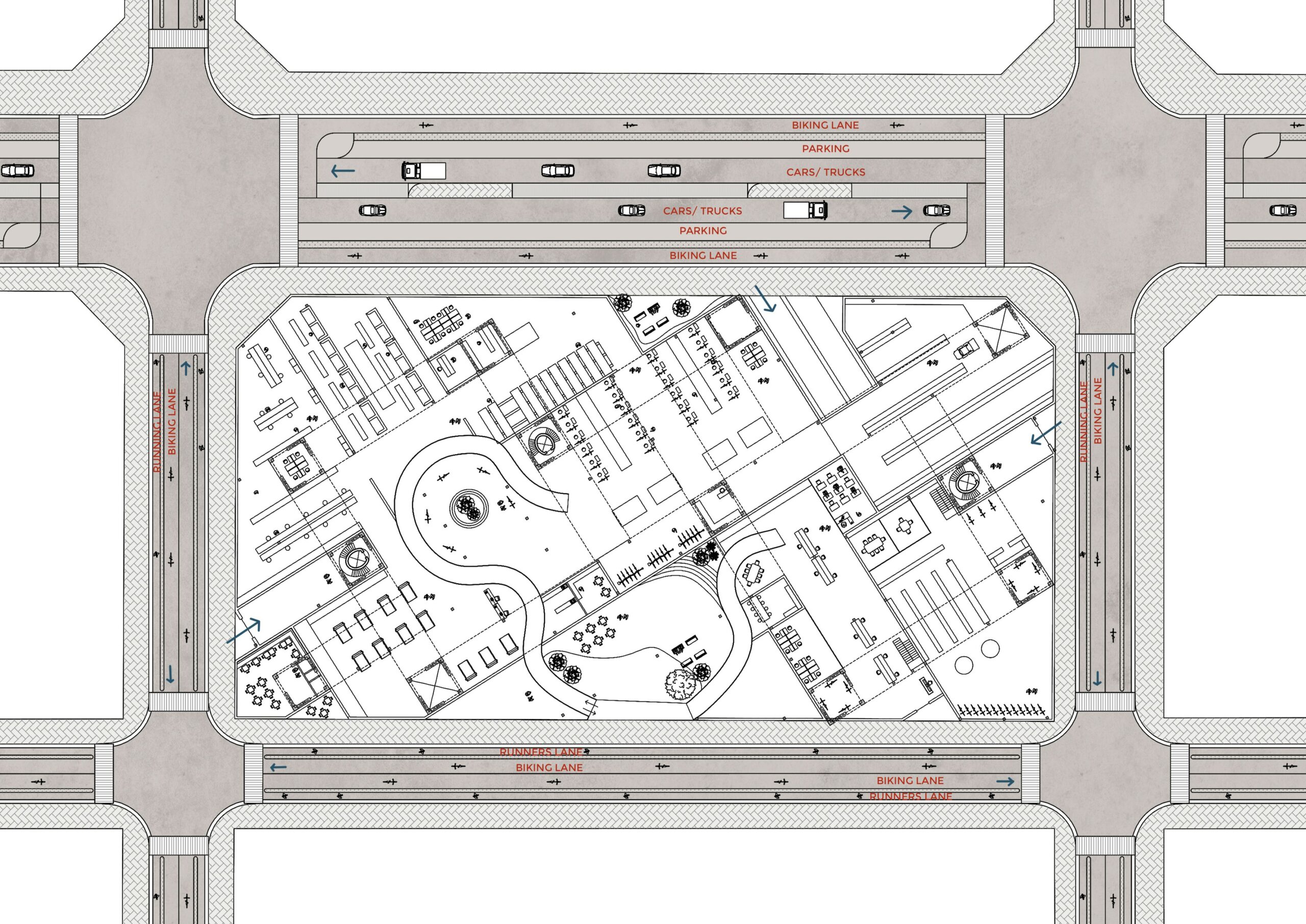
Floor Plans
Going down to the basement, we find the different warehouses, both for our cargo-bike deliveries and for the production of bikes.
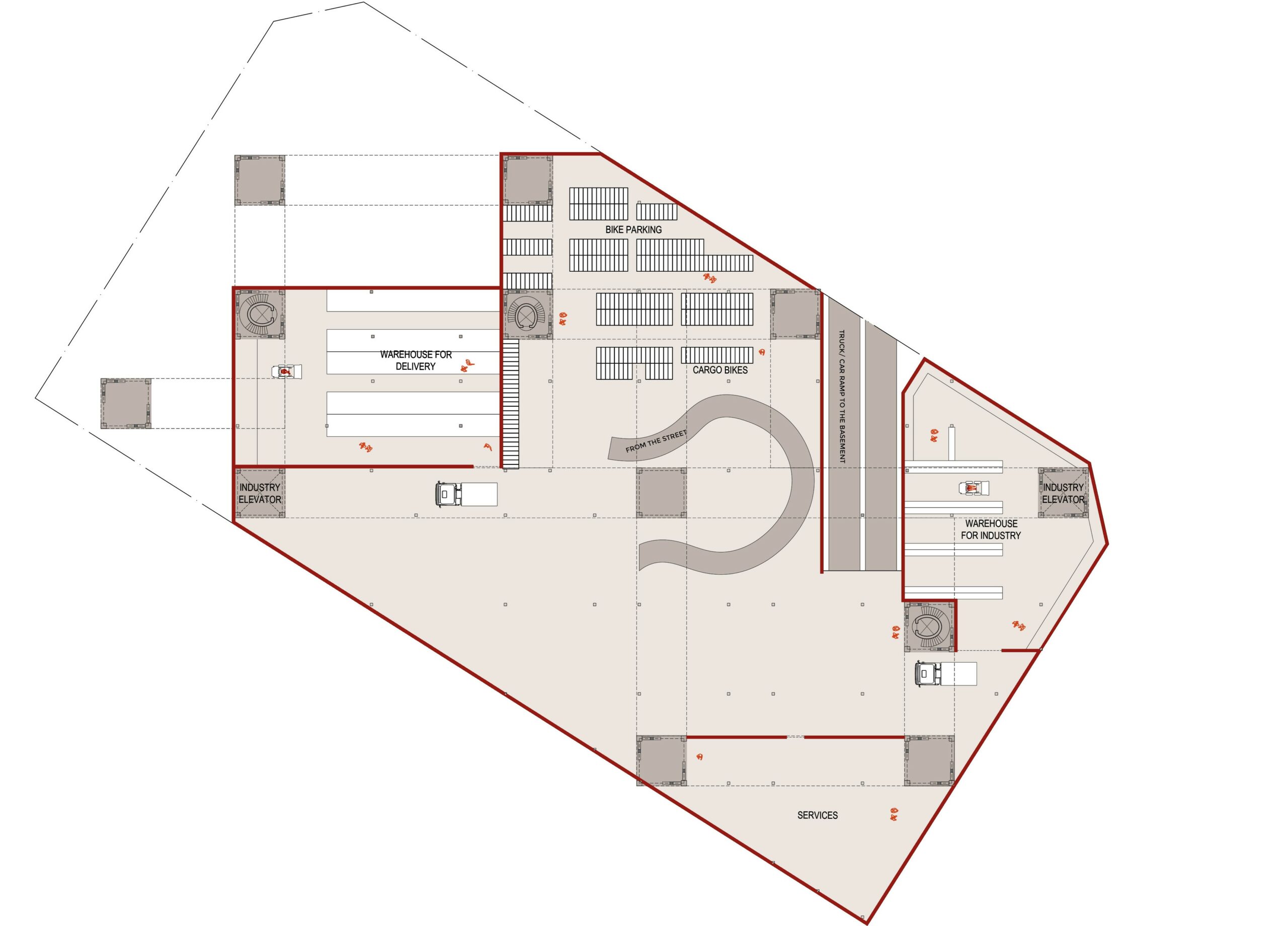
The first floor mainly comprises offices and some atrium spaces.
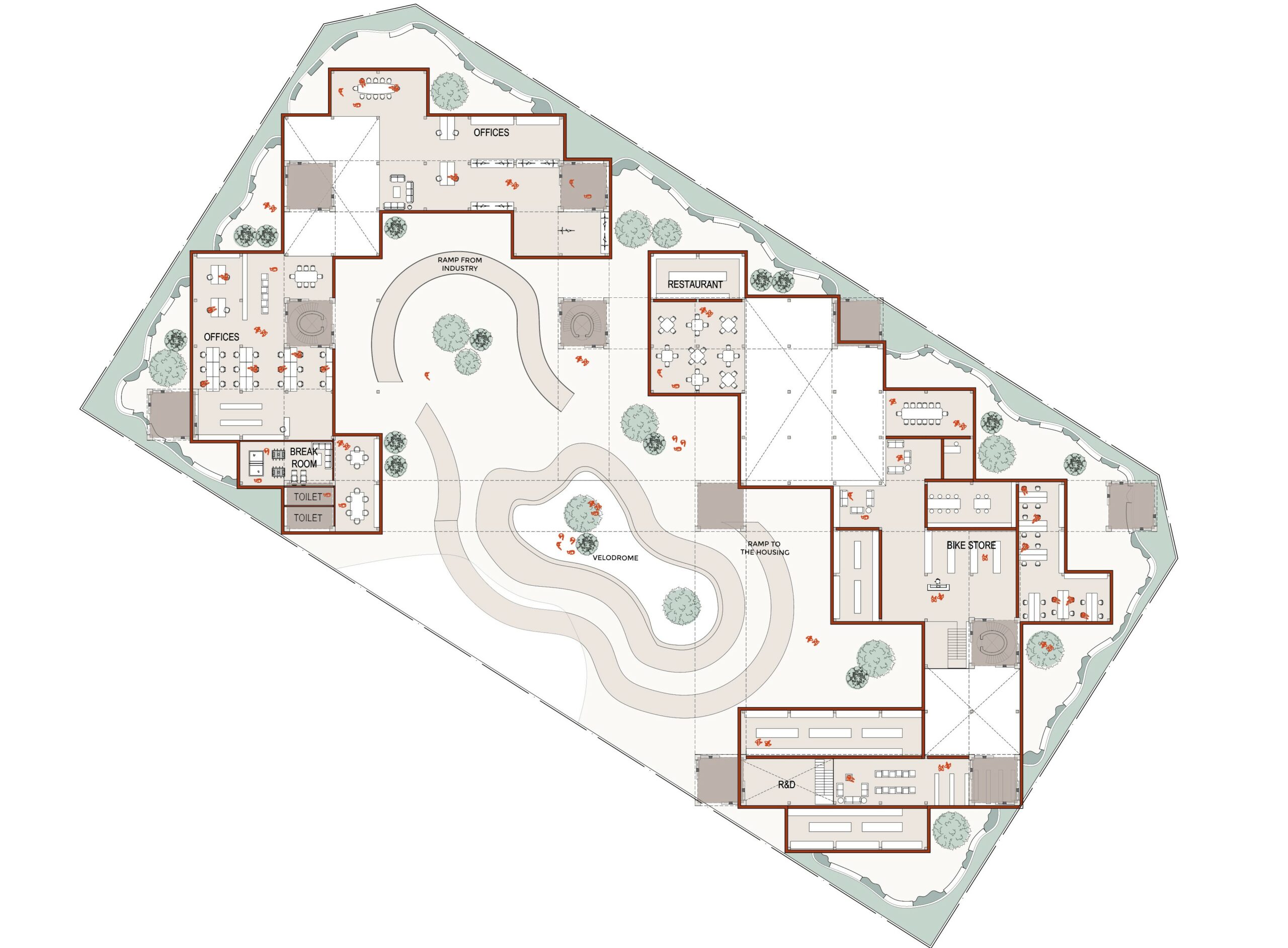
Interior View of the Industry
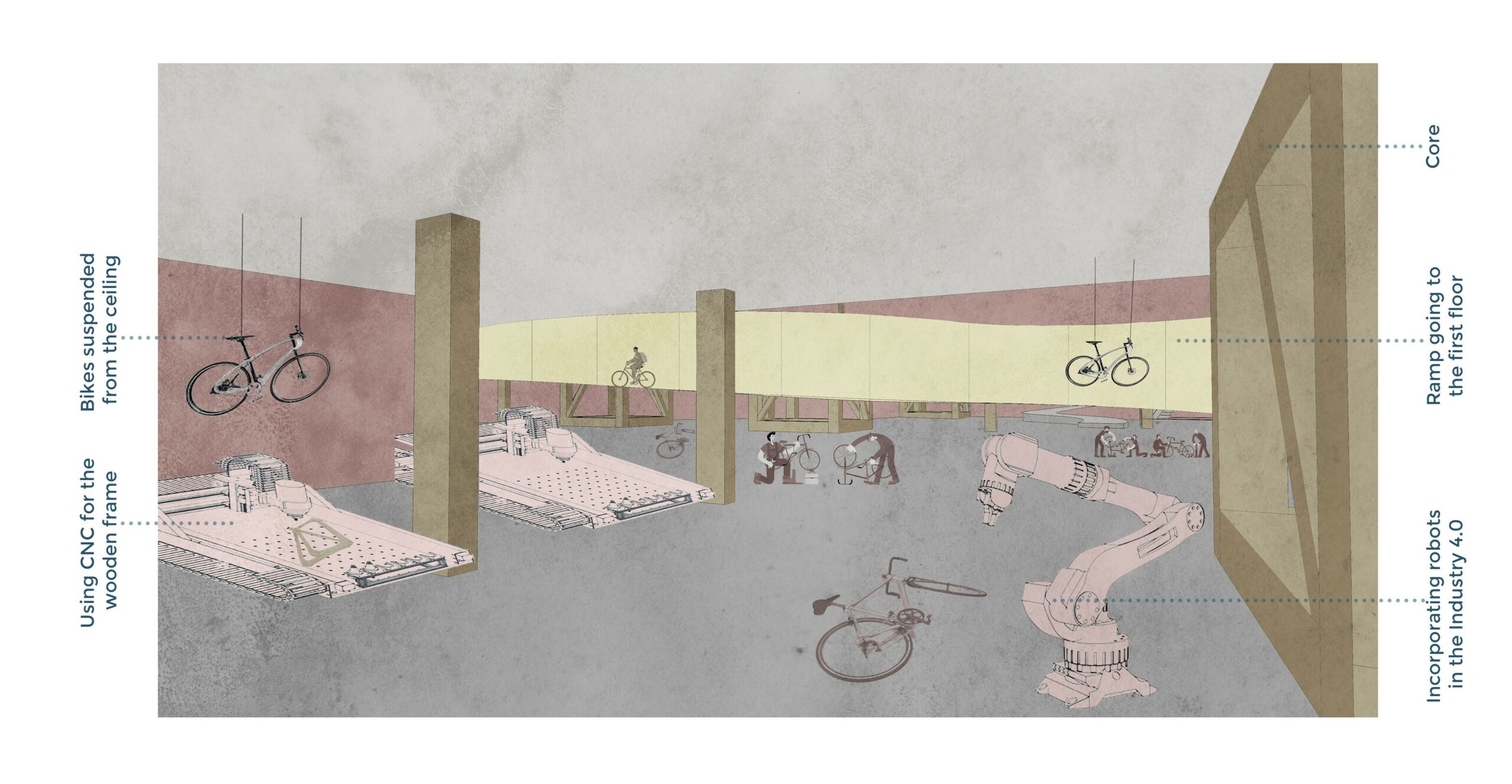
Circulation : Horizontal and Vertical
As mentioned before, our bike ramps go all the way up, leading to slabs on every level. Additionally, the vertical trusses going all the way up to the rooftop level, allow for the incorporation of vertical circulation.
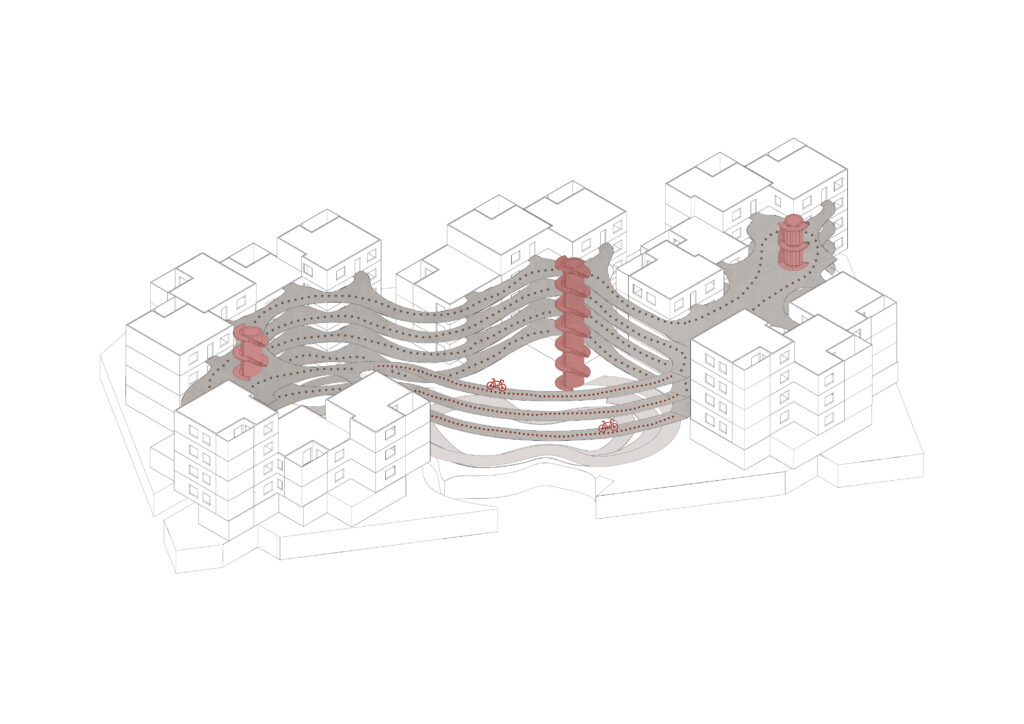
Ecosystemic Structures
The struc can be described as being composed of three different parts: a green facade and slabs being held up by tensors, which are then attached to trusses supported by cores and inside columns and beams within the houses.

The picture below shows a rooftop and truss plan. The cores are marked in red.
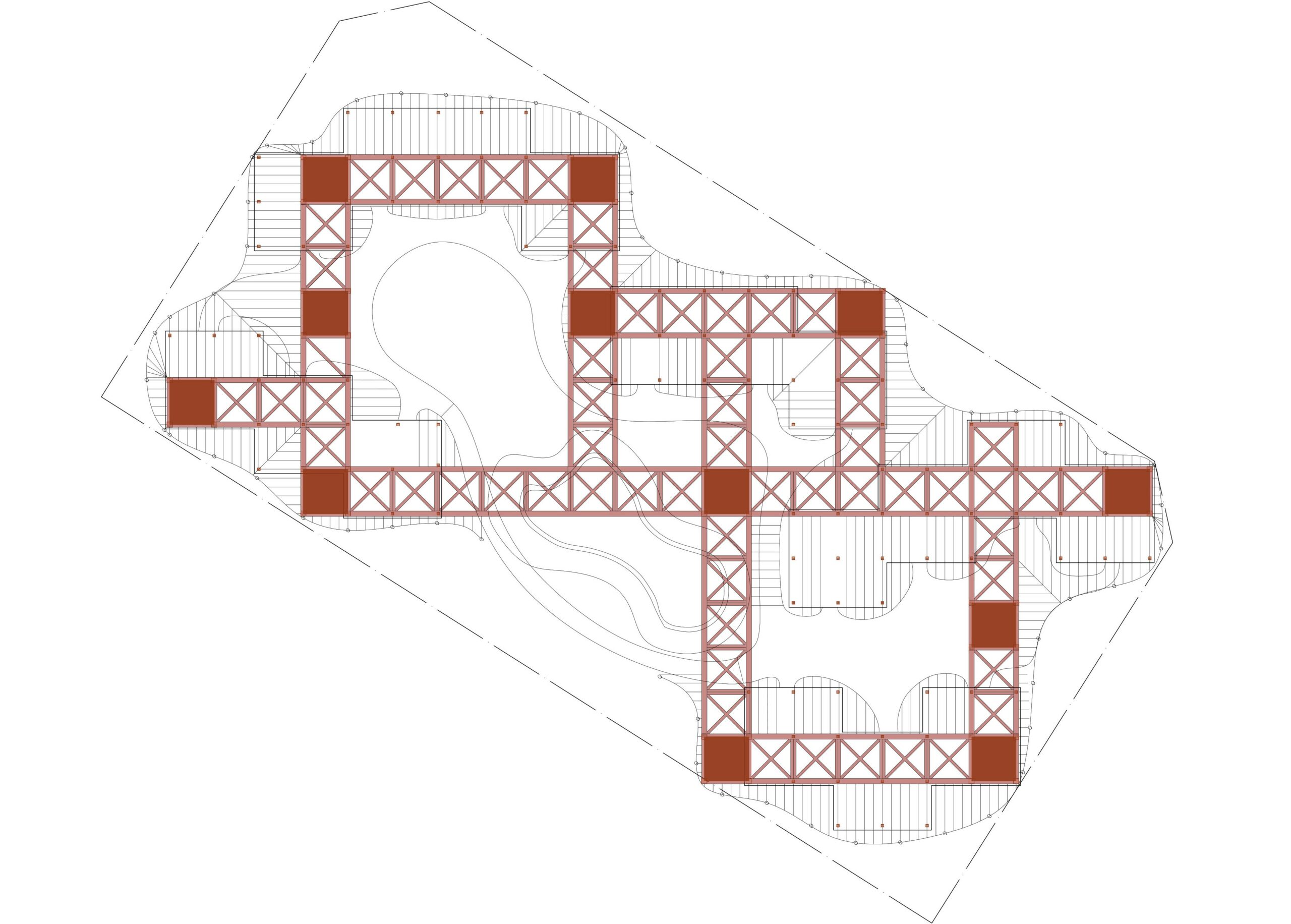
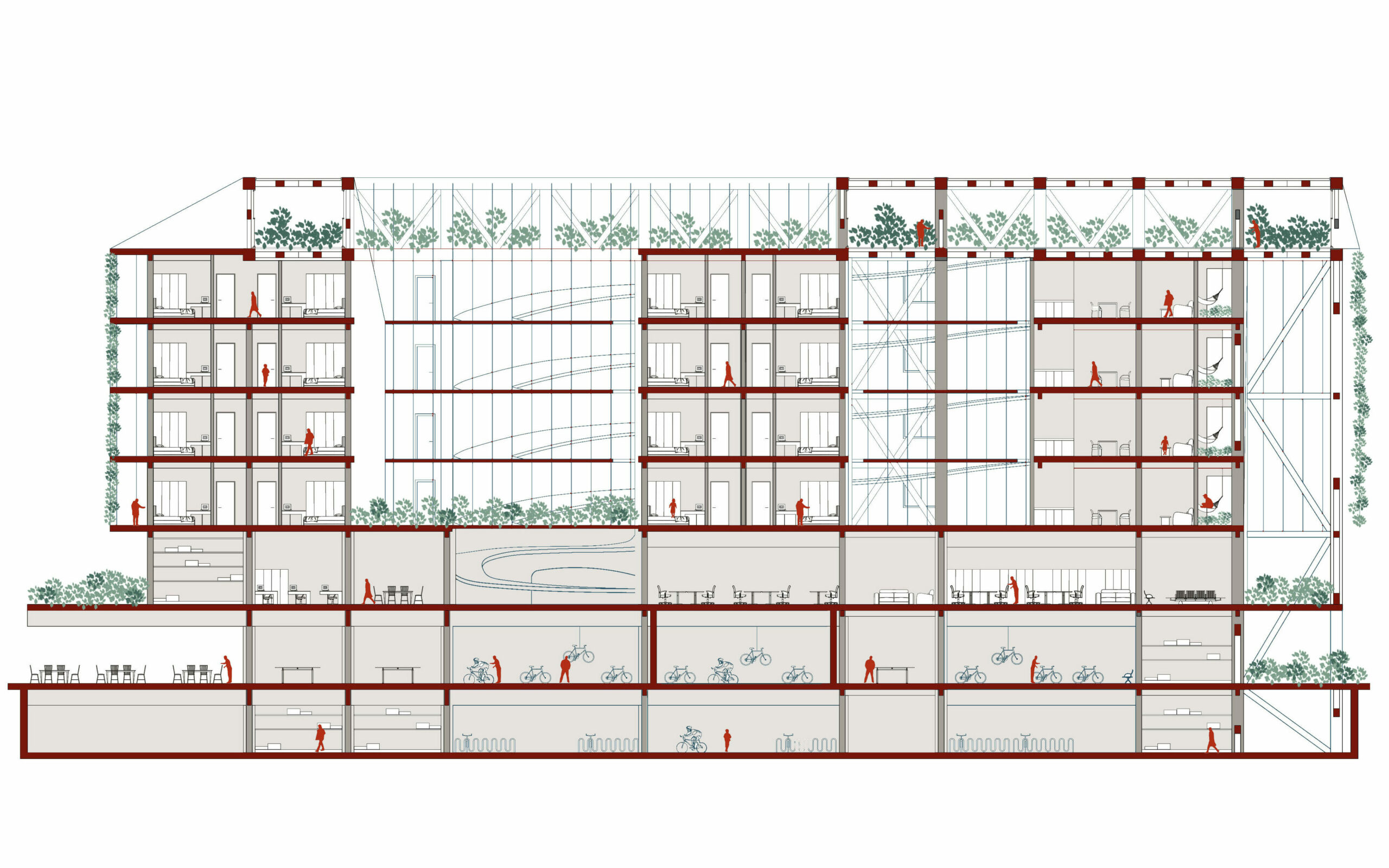

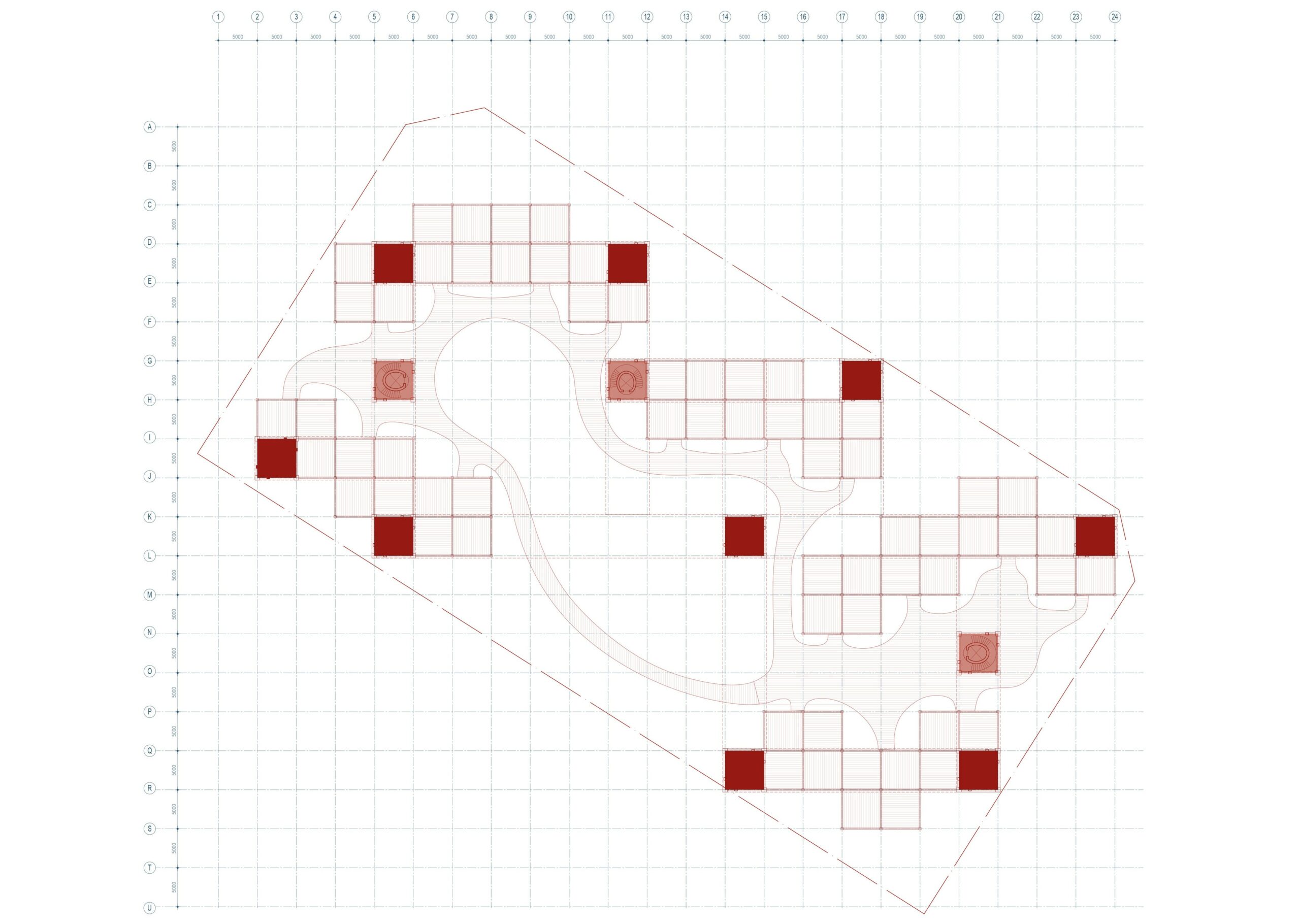
Residential Design
The housing units are oriented in such a way that cross-ventillation through the unit is ensured. Each appartment also has a small terrace behind the green facade. The slab, which doubles as circulation space and social space, is linked to each appartment and connected to the vertical cores.
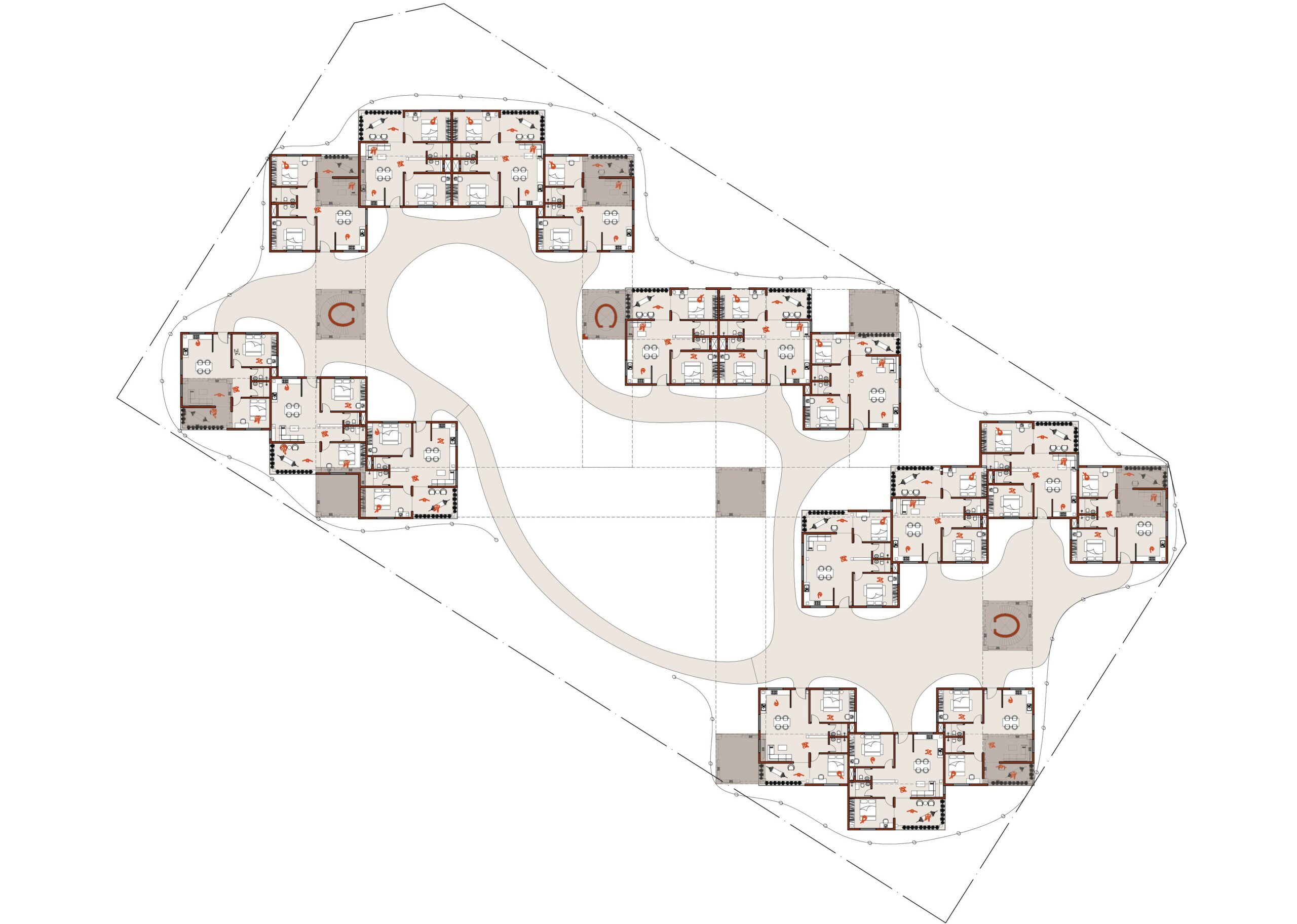
During the winter, the terrace, having a glass partition can be closed off and can double as a greenhouse space. In the summer, additional vegetation on the double facade and the open partition allow for shading and cooler, clean wind to enter the housing unit.
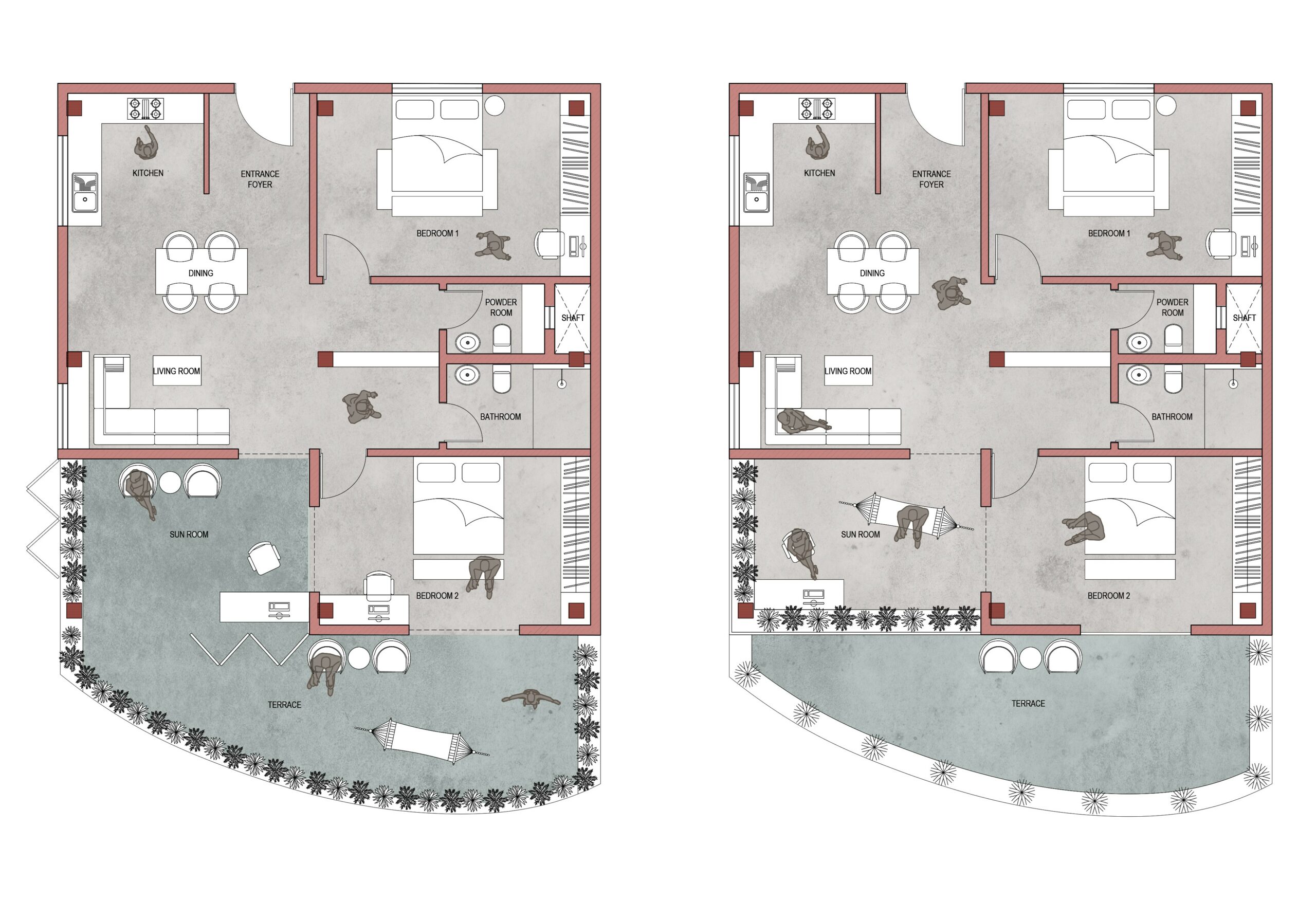
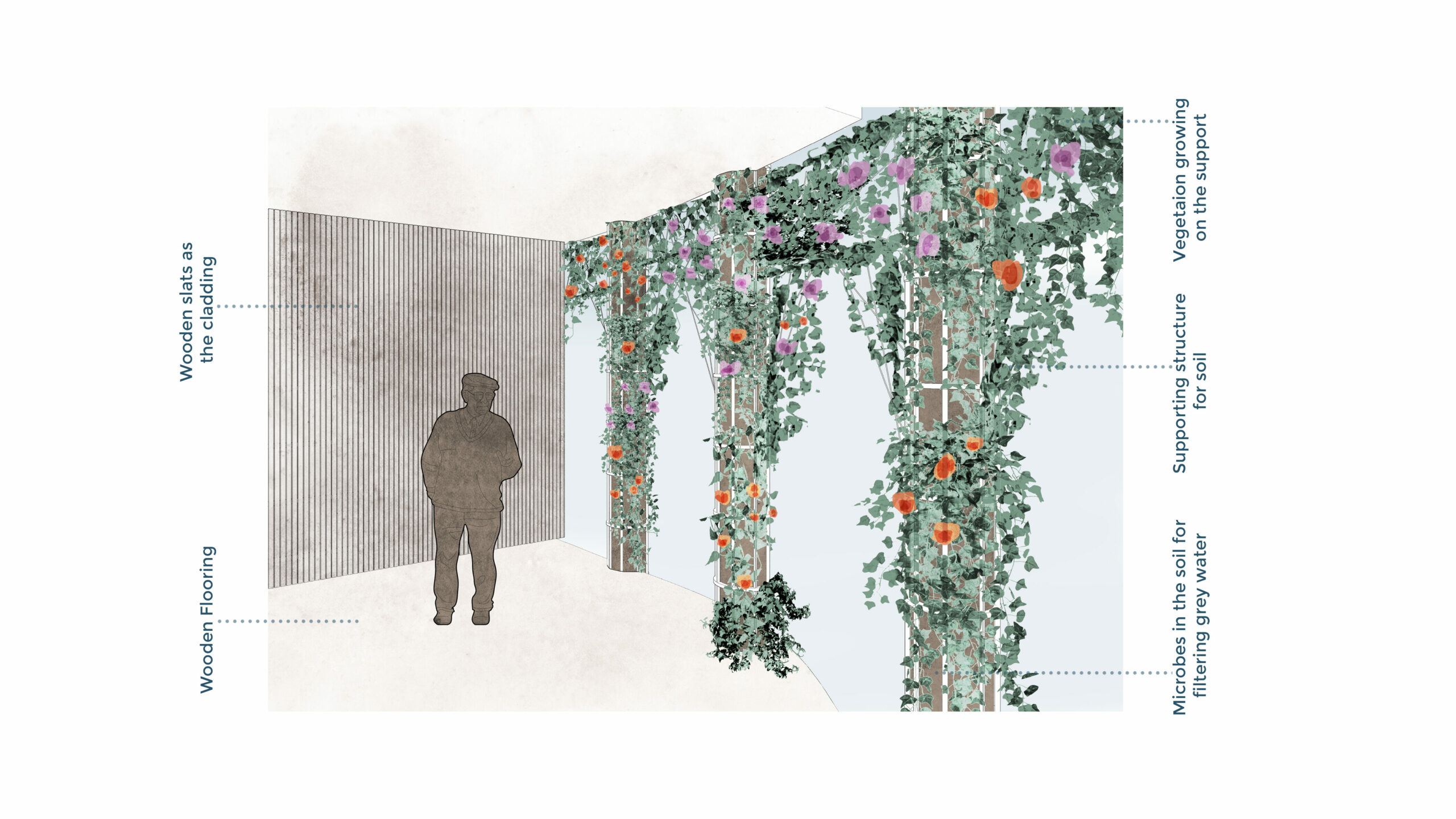
Passive Design Strategies

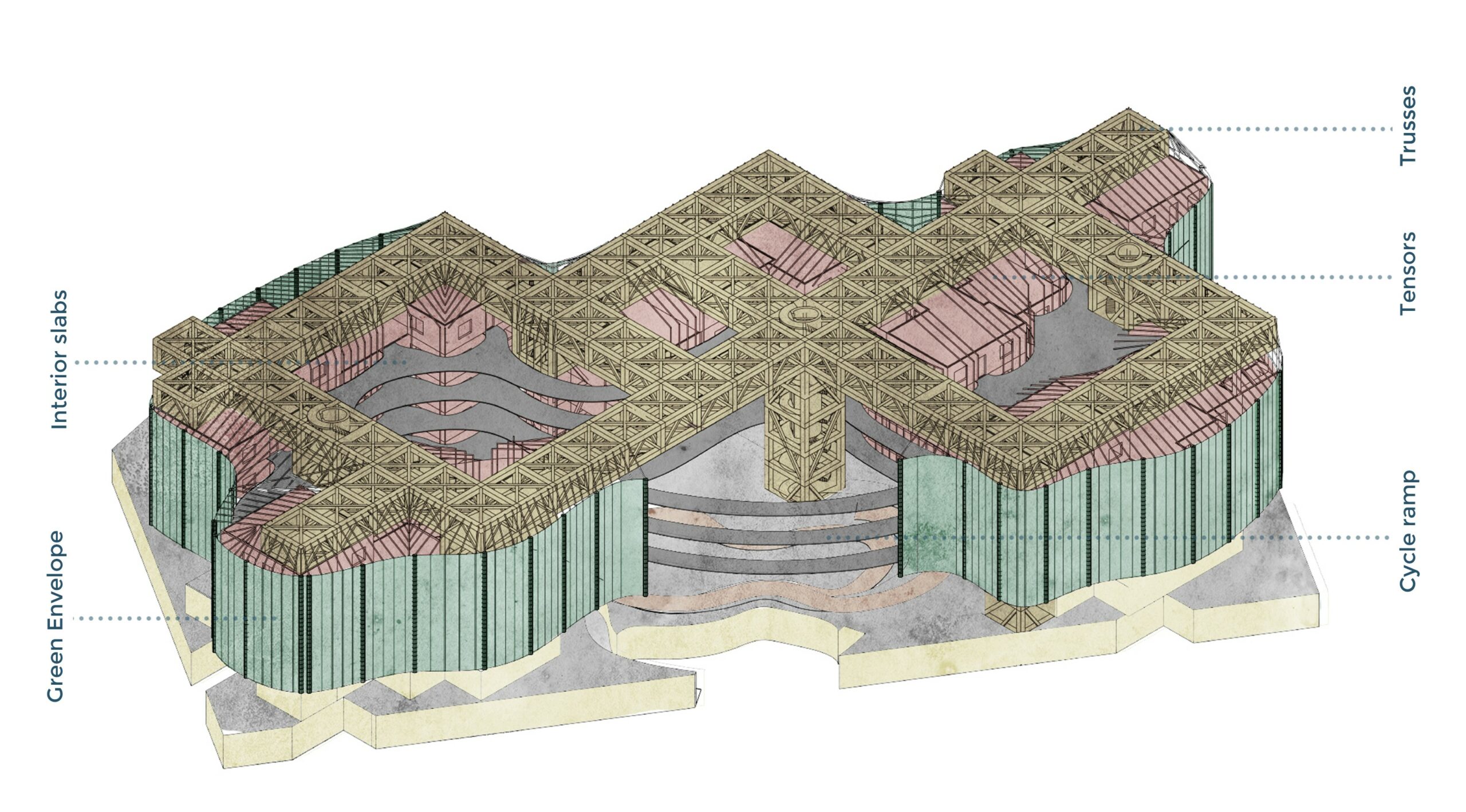
Water Treatment System


Food Production
The trusses on the roof double as greenhouses for food production. The greenhouses are equipped with plant beds and germination trays.
To provide more energy for the housing, the glass panels of the roof incorporate PV panels, which allow for the production of green energy.


Interior view
